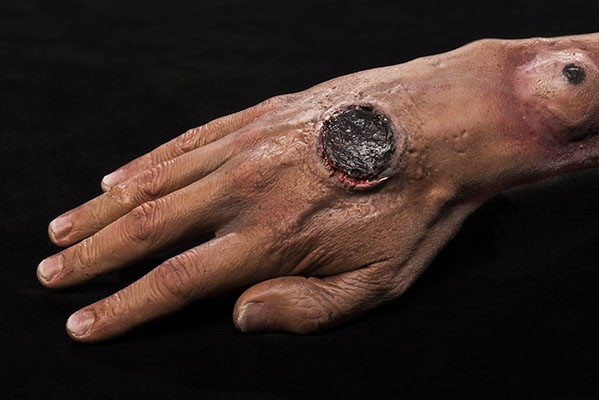July 2, 2023
By Doli Jindal
Anthrax is a serious infectious disease caused by gram-positive, rod-shaped bacteria known as Bacillus anthracis. It occurs naturally in soil and commonly affects domestic and wild animals around the world. People can get sick with anthrax if they come in contact with infected animals or contaminated animal products. Anthrax can cause severe illness in both humans and animals. Anthrax is not contagious, which means you can’t catch it from another person like the cold or flu.
The symptoms of anthrax depend on the type of infection and can take anywhere from 1 day to more than 2 months to appear. All types of anthrax have the potential, if untreated, to spread throughout the body and cause severe illness and even death.
Cutaneous anthrax symptoms can include:
- A group of small blisters or bumps that may itch
- Swelling can occur around the sore
- A painless skin sore (ulcer) with a black centre that appears after the small blisters or bumps
- • Most often the sore will be on the face, neck, arms, or hand
- Fever and chills
- Chest Discomfort
- Shortness of breath
- Confusion or dizziness
- Cough
- Nausea, vomiting, or stomach pains
- Headache
- Sweats (often drenching)
- Extreme tiredness
- Body aches

People get infected with anthrax when spores get into the body. When anthrax spores get inside the body, they can be “activated.” The bacteria can then multiply, spread out in the body, produce toxins, and cause severe illness.
This can happen when people breathe in spores, eat food or drink water contaminated with spores, or get spores in a cut or scrape in the skin. It is very uncommon for people in the United States to get infected with anthrax.
Domestic and wild animals can become infected when they breathe in or ingest spores in contaminated soil, plants, or water. These animals can include cattle, sheep, goats, antelope, and deer. In areas where domestic animals have had anthrax in the past, routine vaccination can help prevent outbreaks.
Imported animal hides have been associated with a number of anthrax cases in the United States. Cases have occurred in drum makers using these hides. Cases have also occurred in people who have handled or been near the drums or in the environment where they were made. Some imported hides may contain anthrax spores, and although this is rare, there is no way to test for the presence of spores on hides.
Where anthrax is found
- Central and South America
- Sub-Saharan Africa
- Central and southwestern Asia
- Southern and eastern Europe
- The Caribbean
To protect against anthrax spores, be sure to use hides that came from:
- Animals from the United States
- Animals that were imported with an international veterinary certificate showing that they have undergone the appropriate government inspection
Visitors to areas where anthrax is common or where an outbreak is occurring in animals can get sick with anthrax if they have contact with infected animal carcasses or eat meat from animals that were sick when slaughtered. They can also get sick if they handle animal parts, such as hides, or products made from those animal parts, such as animal hide drums. If you are visiting these areas, do not eat raw or undercooked meat and avoid contact with livestock, animal products, and animal carcasses.
****